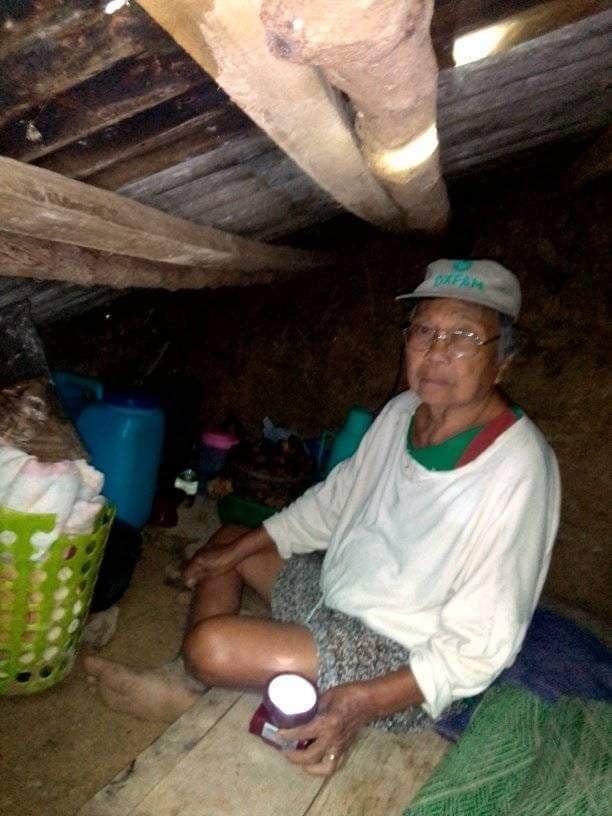Situation Overview
In PAGASA’s 11:00 am advisory, the center of the eye of TY Odette was located 380 km west northwest of Puerto Princesa City, Palawan o5 155 km east of Pag-asa Island, Kalayaan, Palawan. It had maximum sustained winds of 155 km/h near the center and gustiness of up to 190 km/h.
Tropical Cyclone Wind Signal No. 3 is still hoisted over Kalayaan Islands in Palawan, while the rest of the western portion of Palawan is under Signal No. 1.
Odette strengthened into a Category 1 to 5 typhoon in just one day which made it difficult for people to prepare for the arrival of the storm or to evacuate. The typhoon increased by 85 mph in just 24 hours.
The full impact of the disaster is not yet known due to difficulties accessing locations, communication transmission outages and the initial focus on search and rescue. Siargao island is heavily damaged with extensive destruction according to officials.
In Surigao City, reports say everything is damaged. Authorities blame the storm moving very slowly as it traversed the area as the cause for the intensity of damage. Even the provincial disaster office is destroyed with a reporter saying “It looks like it’s been hit by a bomb.”
In the isolated Dinagat province, the destruction Odette caused could surpass the devastation caused by Super Typhoon Yolanda, one of the most powerful tropical cyclones on record and the most destructive in 2013.
Source: Philippine Atmospheric, Geophysical and Astronomical Services Administration (PAGASA), Center for Disaster Philanthropy, Rappler
Affected Populations
According to the Department of Social Welfare and Development DROMIC Report, a total of 130,128 families or 477,614 individuals were affected by typhoon Odette. A total of 81,610 families or 305,671 individuals are displaced and are staying in and outside evacuation centers.
According to the National Disaster Risk Reduction and Management Council, a total of 10 areas in Capiz, Southern Leyte, Davao City, and Lanao del Sur were flooded due to Typhoon Odette.
A total of 4 deaths were reported in Iloilo, Guimaras, and Negros Occidental.
Primary roads in Dinagat Islands and Surigao del Norte are not passable to all types of vehicles. Power interruptions and outages were experienced in 75 areas in Antique, Bohol, Cebu, Negros Oriental, Leyte, Biliran, Southern Leyte, and Davao Oriental.
Communication lines are down in Cebu and Southern Leyte. The airport in Romblon is non-operational. Flights in and out of Davao City and Butuan City were also cancelled.
Sea ports in Batangas, Quezon, Oriental Mindoro, Romblon, Marinduque, Occidental Mindoro, Palawan, Albay, Sorsogon, Masbate, Camarines Sur, Catanduanes, Camarines Norte, Aklan, Cebu, Negros Oriental, and Butuan City are non-operational.
A total of 5,564 passengers were stranded in Quezon, Oriental Mindoro, Sorsogon, Masbate, Albay, Ctanduanes, Iloilo, Guimaras, Aklan, Negros Occidental, Southern Leyte, Northern Samar, Leyte, Zamboanga del Sur, Agusan del Norte, and Surigao del Norte.
Regional Centers are still conducting DNCA as of this writing. Many heavily affected communities in Leyte and Southern Negros are unreachable due to communication and power outages.
According to initial reports from Leyte Center for Development, a total of 1,310 families in the municipalities of Dulag, Abuyog, and Palo in Leyte, all coastline communities, were affected. Most resident are fisher folk whose fishing boats and nets were destroyed by the storm surges.
Source: National Disaster Risk Reduction and Management Council (NDRRMC) Inquirer, Leyte Center for Development, Panay Center for Disaster Response, Capiz PDRRMO, PCDR-DPCs, Antique PDRRMO)
Emergency Response Efforts
1. CDRC is closely monitoring Typhoon “ODETTE” since it was spotted by PAGASA and also monitoring the situation in the affected areas and constantly updating situation reports.
2. CDRC is also closely coordinating with its regional centers in affected areas to collect information on the situation and needs of the ground.
3. On December 15, CDRCC established the activation of Emergency Response Team for TY Odette as well as the affected regions of its partners. (PCDR, LCDE, CPRS and DIRECT).
4. Constant coordination was made by CDRC’s Regional centers with their respective LGU partners particularly with the Local DRRM Offices in the affected cities and provinces. Emergency Response Teams of the respective affected regional centers has been monitoring the developments of the local situation and continue to send data from the ground.
5. With the rising need for emergency response, CDRC has activated its emergency response, which motivates its coordination mechanisms and fundraising efforts. A call for donation for TY Odette has already been posted in our official Facebook page.
6. In addition to establishing ongoing coordination between partners and other networks, typhoon-affected regional centers are currently making an appeal through Emergency Relief Assistance Fund.
Resources Available
Standby emergency funds
1. Prepositioned goods at the CDRC warehouse
2. Monetary and in-kind donations
Expressed Needs
Initial Assessments have indicated immediate needs include;
• Food supplies
• Clean water
• Hygiene kits
• Facemasks
• Primary medicines
• Sleeping materials
Coordination
1. Regional Center
2. LCDE
3. PCDR
4. CPRS
5. DIRECT
6. STPRC
Contacts
1. Hanna Fiel, Deputy Executive Director, 0945-8355589, hanna.fiel.cdrc2019@gmail.com
2. Cora Jazmines, Local Partnerships Department, 0928-182-4969, lpd@cdrc-phil.com

